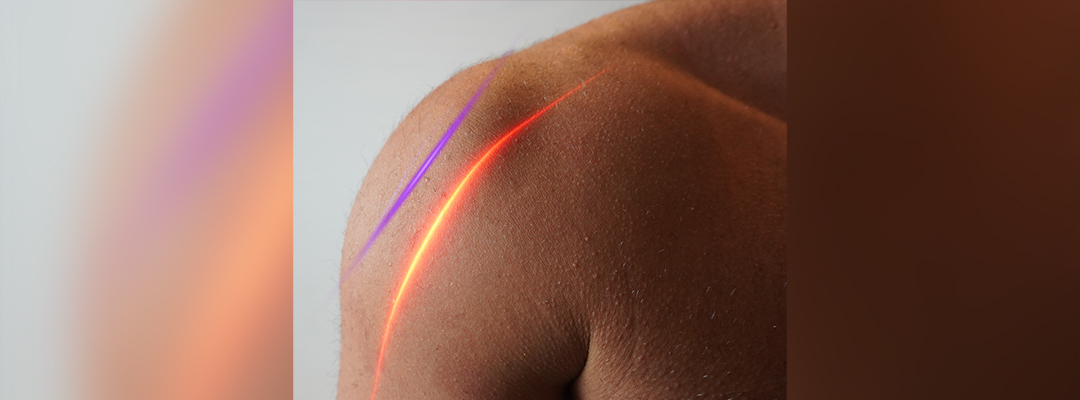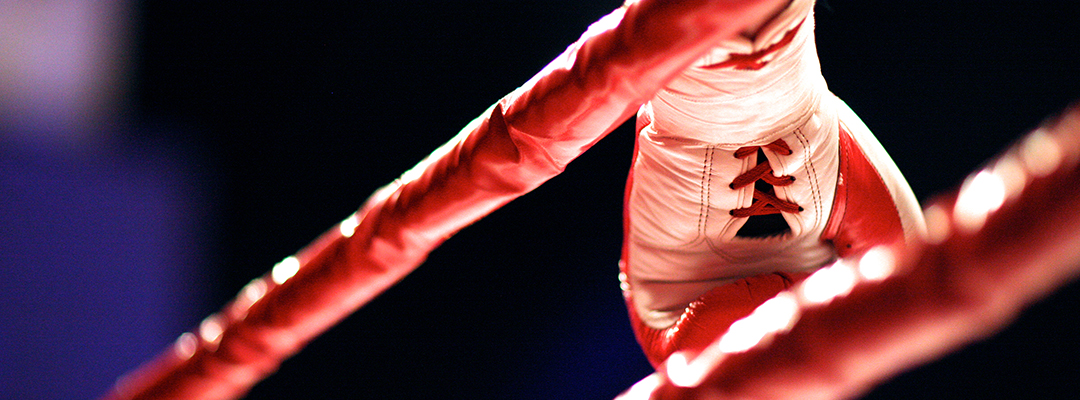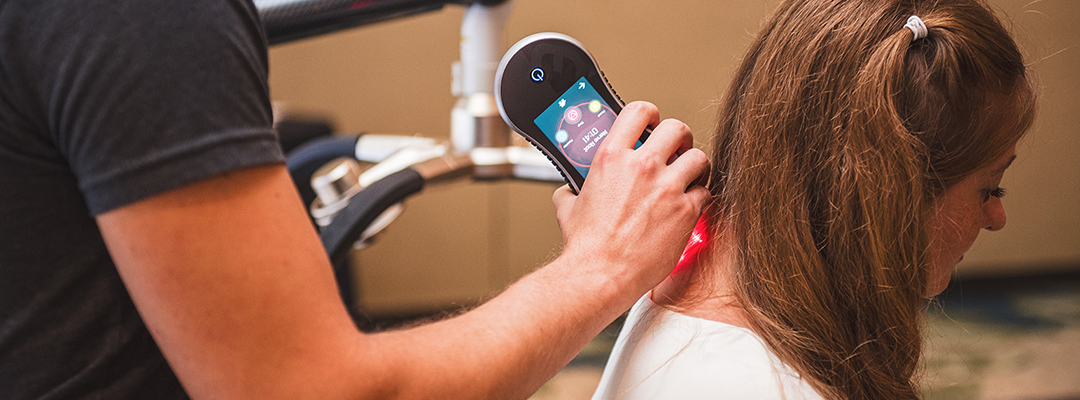
8-Minute Read
As an athletic trainer, your top priority is to help your clients perform at their peak ability both physically and mentally. Low-level laser therapy (LLLT), also known as cold laser therapy or photobiomodulation, is a non-invasive treatment that uses low-powered lasers to stimulate cell function and promote healing.
Related: [Free eBook Download] Not All Light is the Same in Low-Level Laser Therapy
While LLLT has been around for decades, its use in sports medicine has only recently gained popularity. According to a study published in the Journal of Athletic Training, LLLT has the potential to be effective in aiding the recovery for sports injuries and found that LLLT can accelerate healing time, reduce pain, and improve range of motion in athletes.
So, as an athletic trainer, are you using all the tools in your arsenal? This innovative treatment is gaining traction in the world of sports medicine, and with good reason. In this article, we’ll explore how laser therapy can benefit athletes both physically and mentally.
Recovery and Pain Relief
One of the most compelling reasons to consider laser therapy for your athletes is its ability to aid in recovery and reduce pain. Chiropractic laser therapy has been shown to decrease inflammation and promote tissue healing, making it an attractive option for individuals with sports-related injuries.

Experience faster recovery and pain relief with chiropractic laser therapy, a game-changer for athletes dealing with sports-related injuries and chronic pain.
It can also help manage chronic pain caused by conditions such as arthritis, tendinitis, and bursitis, giving athletes a way to stay active and pain-free.
What sets laser therapy apart from other pain relief modalities? For one, it’s non-invasive and drug-free, which means no side effects or recovery time. It’s also precise, targeting only the affected area rather than affecting the whole body like medication or surgery.
This makes it an excellent complement to other treatment methods, such as physical therapy or chiropractic adjustments.
Drug-Free Performance Enhancement
While laser therapy is often utilized for recovery and pain relief, it can also help improve athletic performance. Studies have shown that laser therapy can increase muscle strength, speed up recovery time post-exercise, and decrease muscle fatigue. It can also promote better circulation, helping deliver oxygen and nutrients to the body’s tissues more efficiently.
But perhaps the most exciting application of laser therapy for athletes is its potential to improve mental clarity and focus. This is where Eli Garcia, a professional boxer, found laser therapy to be a game-changer. By combining laser therapy with eye exercises, his doctor, Dr. Michael Burdorf, was able to improve Garcia’s hand-eye coordination and mental acuity. This enabled Garcia to take his performance to the next level, both in and out of the ring.

Professional boxer Eli Garcia credits laser therapy and brain exercises for improving his mental clarity and focus, allowing him to take his performance to the next level both in and out of the ring.
In an interview on the Laser Light Show Podcast, Garcia explained how the combination of LLLT and brain exercises have helped him mentally stay strong and focus on his opponent rather than external factors. “It’s the lasers, and the brain exercises that he helps with,” explained Garcia. “Mentally it keeps me strong.”
Listen to the full interview here:
Garcia has an impressive record of 11 wins and 0 losses, with nine of those wins coming from knockouts. Garcia says that he is always learning and that even when he doesn’t get a knockout, it is still a learning experience.
Incorporating Laser Therapy into an Athlete’s Routine
If you’re considering adding laser therapy to your clients’ wellness routines, it’s important to take a systematic approach. There are a few things to keep in mind.
First and foremost, it’s crucial to start with low-level treatment to allow the body to become acclimated to the therapy and reduce the risk of side effects. This gradual approach will enable you to increase the intensity of the therapy over time as the athlete’s body becomes accustomed to it.

Gradual introduction and regular sessions of low-level laser therapy is crucial to reduce side effects and achieve optimal results for athletes with varying needs.
Scheduling regular treatment sessions is also crucial for optimal results. The frequency of treatment sessions may vary depending on the athlete’s needs, and it’s important to keep an open line of communication with your patients to ensure that they are getting the desired results. Athletes may also require more frequent treatment sessions to manage pain or inflammation, and it’s essential to stay flexible and adjust the frequency of the therapy accordingly.
Related: How Erchonia Cold Laser Devices Assist Medical Professionals
While incorporating LLLT into an athlete’s routine, it’s also essential to understand that this therapy is most effective when used in conjunction with other treatments that promote physical and mental well-being, such as nutrition and exercise. A comprehensive treatment plan that covers all these areas can help athletes maximize the benefits of laser therapy and gain a competitive edge in their pursuits.
Finally, it’s important to monitor your patient’s progress and make adjustments to the treatment plan as needed. Regular assessments can help ensure that the athlete is getting the desired results and can help identify any potential areas for improvement.
Maximizing Athletic Performance & Well-being with Laser Therapy
Laser therapy is a powerful tool for athletic trainers looking to optimize their clients’ physical and mental health.
Whether used for recovery and pain relief or performance enhancement, its non-invasive and precise nature makes it an attractive option for athletes of all levels. By incorporating laser therapy into an overall wellness routine, athletes can potentially gain a competitive edge while promoting their well-being. Consider adding laser therapy to your practice as it is becoming one of the most impressive innovations in physical therapy.
Reach out to Erchonia today to learn more about this rapidly evolving technology.
Not All Light is the Same [Free eBook Download]
Discover the benefits of Low-Level Laser Therapy (3LT®) by Erchonia, a world leader in the field of 3LT® technology. Learn how 3LT® can help reduce the need for prescription opioids for chronic low back pain, the science behind 3LT® and the difference between visible lasers and infrared lasers.
Related: Red Light Therapy: Dispelling Laser Myths with Basic Photochemistry
Sources:
https://pubmed.ncbi.nlm.nih.gov/23626925/



